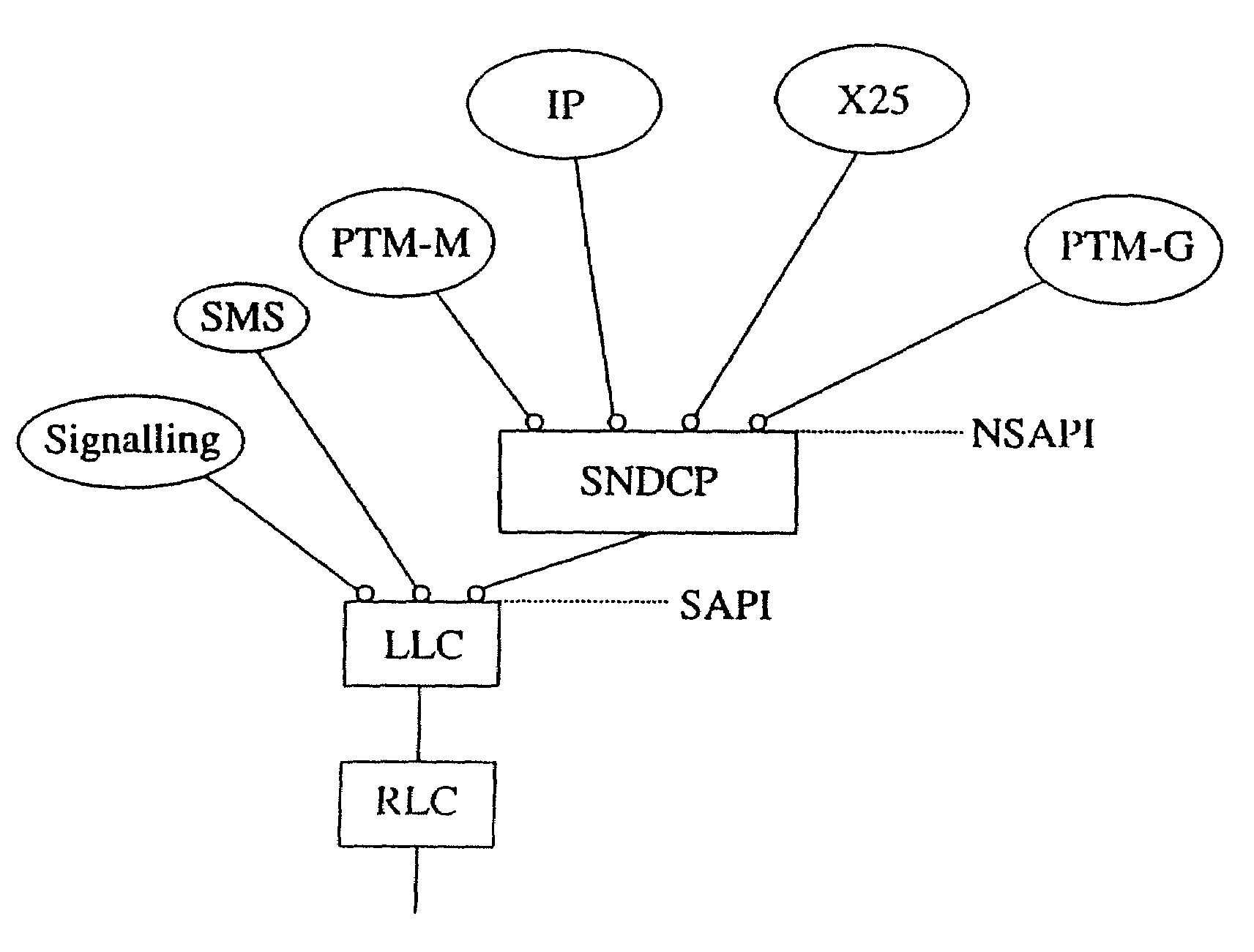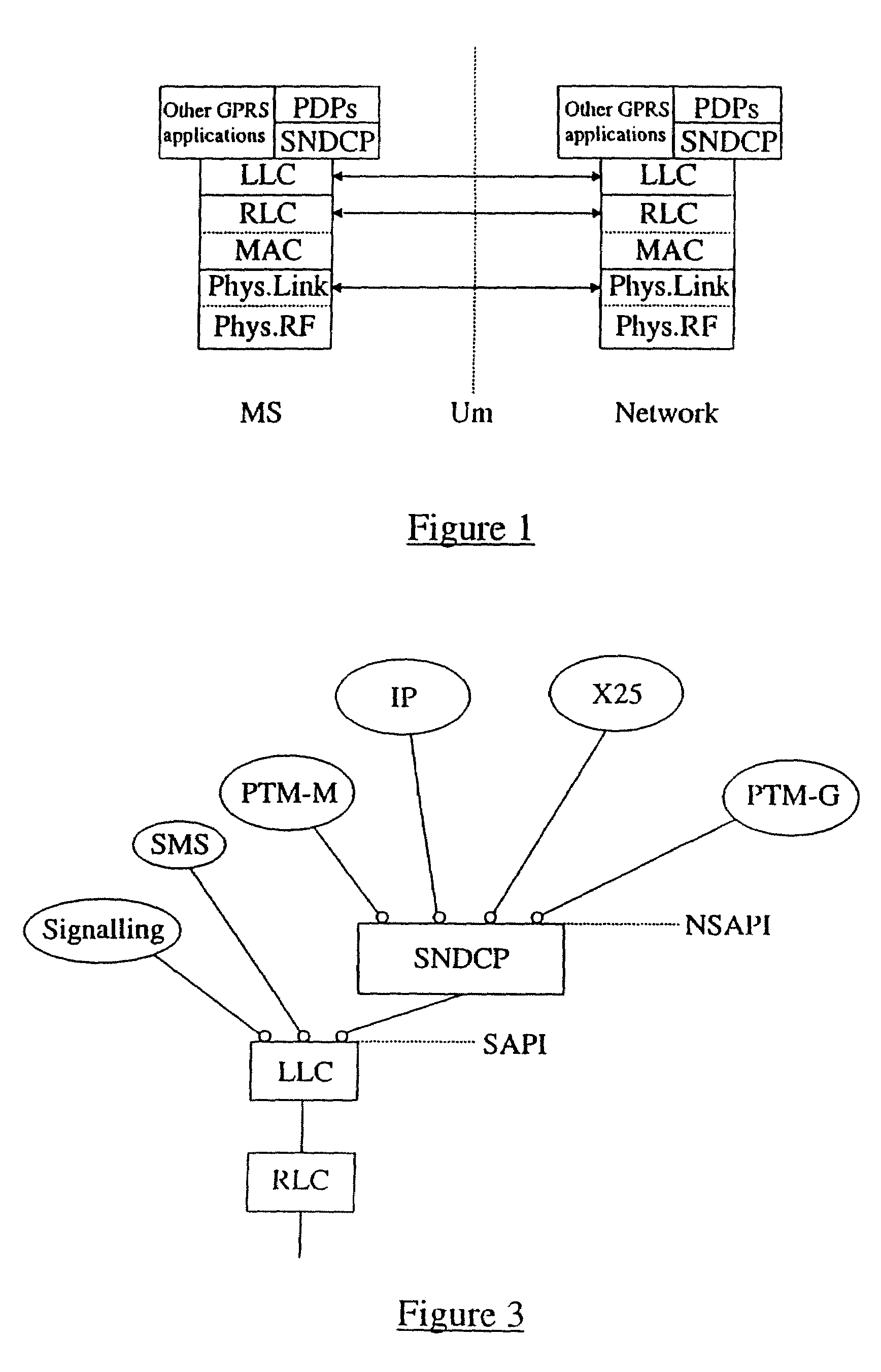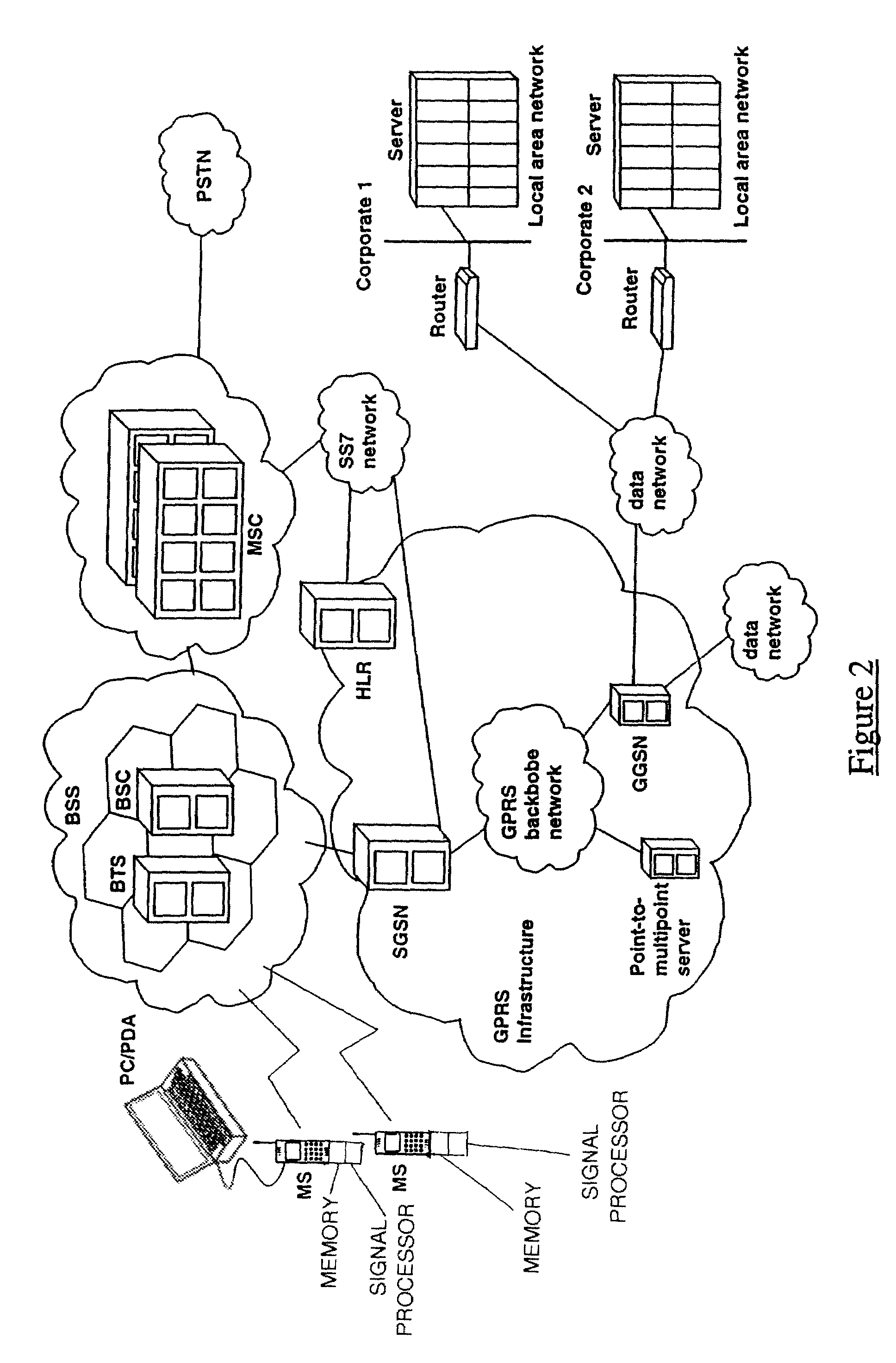Point-to-multipoint mobile radio transmission
- Summary
- Abstract
- Description
- Claims
- Application Information
AI Technical Summary
Benefits of technology
Problems solved by technology
Method used
Image
Examples
Embodiment Construction
[0029]The general architecture of the GPRS protocol layers has already been described above with reference to FIG. 1. The present invention is primarily concerned with the upper layers of this architecture and as such the RLC, LLC, and layer 3 entities are shown separately in FIG. 2. The layer 3 entities shown are signalling, SMS, and the packet data protocols IP and X.25 (both PTPs), PTM-G, and PTM-M.
[0030]The LLC layer formats data into LLC frames each of which contains a data link connection identifier (DLCI) which in turn contains a SAPI (with a value of from 0 to 15). As already explained above, the SAPI identifies the service access point on the network side and the user side of the LLC layer. SAPIs have a predefined value, known to the network and the listening MSs (typically the SAPIs are prestored in a memory of the MS), so that the LLC layer can ‘route’ received transmissions appropriately even in the IDLE state. Consider for example the case where a transmission is receiv...
PUM
 Login to View More
Login to View More Abstract
Description
Claims
Application Information
 Login to View More
Login to View More - R&D
- Intellectual Property
- Life Sciences
- Materials
- Tech Scout
- Unparalleled Data Quality
- Higher Quality Content
- 60% Fewer Hallucinations
Browse by: Latest US Patents, China's latest patents, Technical Efficacy Thesaurus, Application Domain, Technology Topic, Popular Technical Reports.
© 2025 PatSnap. All rights reserved.Legal|Privacy policy|Modern Slavery Act Transparency Statement|Sitemap|About US| Contact US: help@patsnap.com



